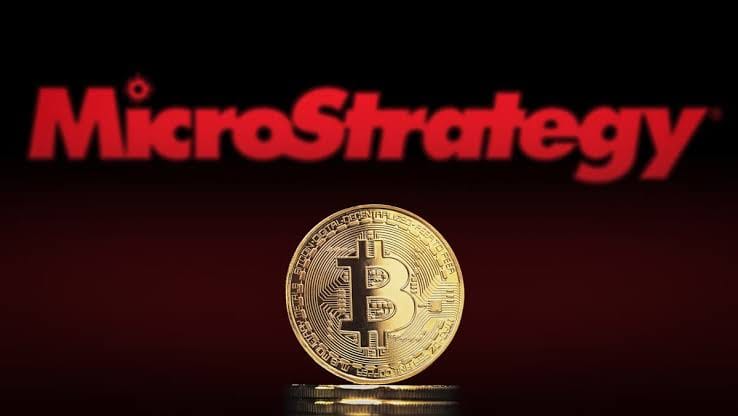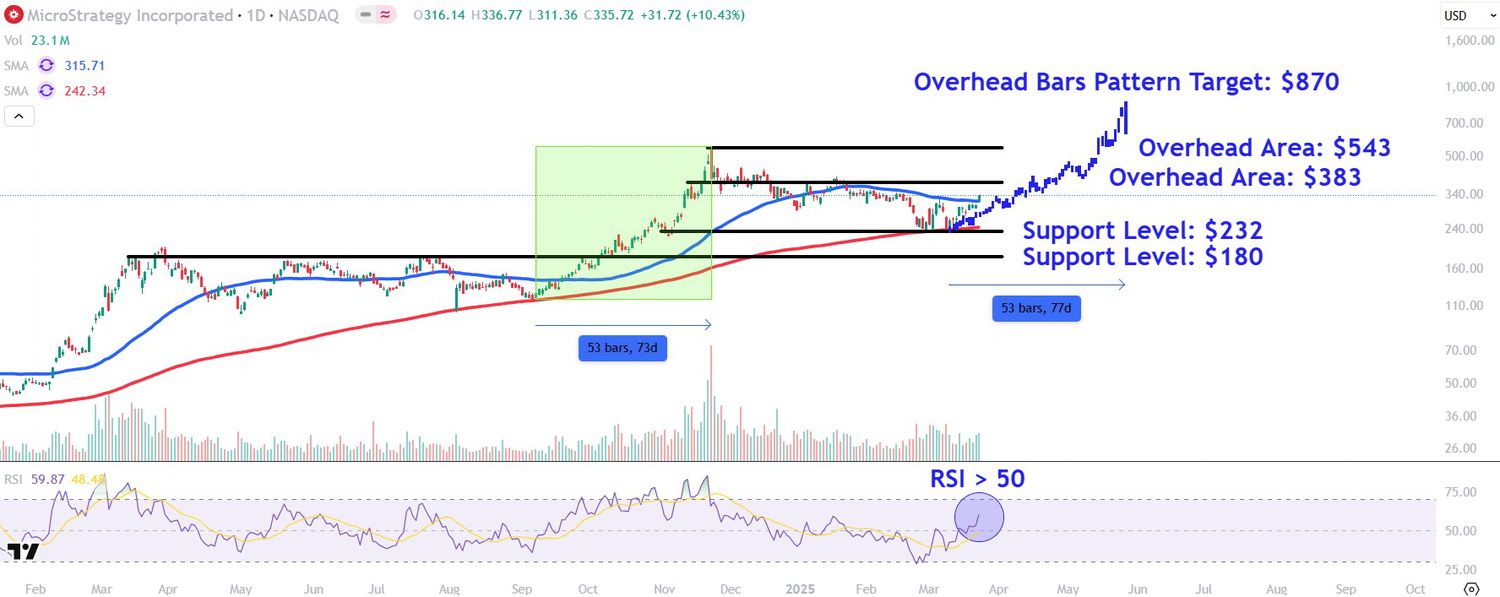MicroStrategy’s Bitcoin Acquisition Strategy: Analyzing Market Implications and Shifts in Investor Sentiment

MicroStrategy, rebranded as Strategy in 2024, has emerged as a pivotal player in the cryptocurrency market through its aggressive Bitcoin acquisition strategy. Under the leadership of Executive Chairman Michael Saylor, the company has transformed from a traditional enterprise software provider into a self-proclaimed "Bitcoin Treasury Company." By May 2025, Strategy holds over 553,555 BTC, valued at approximately $52 billion, making it the largest corporate holder of Bitcoin globally. This bold strategy has not only reshaped the company’s identity but also sent ripples through financial markets, influencing investor sentiment and sparking debates about the sustainability of its approach. This article provides a comprehensive analysis of MicroStrategy’s Bitcoin acquisition strategy, its market implications, and the evolving investor sentiment surrounding it.
The Genesis of MicroStrategy’s Bitcoin Strategy
MicroStrategy’s foray into Bitcoin began in August 2020, when the company announced its first purchase of 21,454 BTC for $250 million. The move was framed as a hedge against inflation and a means to preserve shareholder value amid concerns over fiat currency devaluation. Michael Saylor, a vocal Bitcoin advocate, argued that Bitcoin’s fixed supply of 21 million coins and decentralized nature positioned it as a superior store of value compared to traditional assets like gold or cash.
Since then, Strategy has pursued an unrelenting acquisition strategy, leveraging a combination of cash reserves, debt issuance, equity sales, and convertible notes to amass its Bitcoin holdings. By April 2025, the company had acquired 553,555 BTC at an average purchase price of approximately $84,785 per coin, with a total cost basis exceeding $46 billion. This approach has turned Strategy into a leveraged proxy for Bitcoin, with its stock price (NASDAQ: MSTR) closely tied to the cryptocurrency’s market performance.
Mechanics of the Acquisition Strategy
Strategy’s Bitcoin acquisition strategy is characterized by its use of sophisticated financial engineering to fund purchases. The company employs the following methods:
- At-the-Market (ATM) Offerings: Strategy frequently sells shares of its common stock (MSTR) and preferred stock (STRK) to raise capital. For instance, between April 21 and April 27, 2025, the company sold over $4 million in common stock and 435,000 shares of preferred stock to fund the purchase of 15,355 BTC.
- Debt Issuance: Strategy has issued significant amounts of convertible debt and fixed-income securities to finance its Bitcoin purchases. As of April 2025, the company carries $8.21 billion in loans, with interest and principal repayments looming.
- Preferred Stock Issuance: In 2024 and 2025, Strategy introduced preferred stock offerings, such as the Series A Perpetual Preferred Stock (STRK), to raise additional funds. These offerings come with substantial dividend obligations, such as $146.2 million annually for preferred stock issued by April 2025.
- Leveraged Bitcoin Purchases: By borrowing against its Bitcoin holdings and issuing equity, Strategy amplifies its exposure to Bitcoin’s price movements. This leverage magnifies both potential gains and risks, as the company’s financial health is now inextricably linked to Bitcoin’s market performance.
This strategy has allowed Strategy to accumulate approximately 2.6% of Bitcoin’s total supply, a remarkable feat for a single corporate entity. However, it has also raised concerns about the sustainability of its capital-raising efforts and the risks associated with its highly leveraged balance sheet.
Market Implications
MicroStrategy’s Bitcoin acquisition strategy has far-reaching implications for financial markets, the cryptocurrency ecosystem, and corporate treasury management. Below are the key market impacts:
1. Bitcoin Price Dynamics
Strategy’s consistent Bitcoin purchases have contributed to upward pressure on the cryptocurrency’s price. Since 2020, the company has acquired Bitcoin during both bull and bear markets, often buying dips to capitalize on lower prices. For example, in March 2025, Strategy purchased 22,048 BTC for $1.92 billion, reinforcing its position as a major market player.Analysts estimate that Strategy’s buying activity has absorbed significant sell-side pressure, reducing available supply and contributing to Bitcoin’s price appreciation. Between 2020 and 2025, Bitcoin’s price surged from $10,000 to over $95,000, with Strategy’s purchases coinciding with periods of strong bullish momentum. However, critics argue that Strategy’s aggressive buying could exacerbate volatility if the company is forced to liquidate holdings during a market downturn.
2. Legitimization of Bitcoin as a Corporate Asset
Strategy’s high-profile adoption of Bitcoin as a treasury asset has lent credibility to the cryptocurrency as a legitimate investment vehicle. The company’s success—evidenced by a 2,400% total return on MSTR stock since 2020—has inspired other corporations to explore Bitcoin treasury strategies. For instance, Coinsilium, a UK-based company, has adopted a similar approach, with guidance from advisors linked to Strategy.The launch of Twenty One, a Bitcoin-focused investment company backed by SoftBank, Tether, and Cantor Fitzgerald in April 2025, further validates Strategy’s strategy. TD Cowen analysts noted that Twenty One’s emergence could shift institutional sentiment, potentially converting skeptics into believers in Bitcoin treasury operations.
3. Stock Market Correlation
Strategy’s stock (MSTR) has become a de facto proxy for Bitcoin, often trading at a premium to the net asset value (NAV) of its Bitcoin holdings. As of April 2025, MSTR’s market capitalization stands at $84.7 billion, while its Bitcoin holdings are valued at $47.03 billion, implying a significant premium. This premium reflects investor confidence in Michael Saylor’s management and the company’s ability to continue increasing its Bitcoin holdings per share.However, this correlation introduces volatility. For instance, on April 8, 2025, MSTR shares fell 8.67% after Strategy paused its Bitcoin purchases amid market uncertainties, highlighting the stock’s sensitivity to both Bitcoin’s price and the company’s acquisition activity.
4. Impact on Institutional Adoption
The availability of Bitcoin exchange-traded funds (ETFs) and Strategy’s success have accelerated institutional adoption of cryptocurrency. Financial advisors and institutional investors can now gain exposure to Bitcoin through regulated vehicles like ETFs or by investing in MSTR, which offers leveraged exposure. This trend has fueled inflows into Bitcoin-related assets, with Strategy benefiting from ETF demand.
5. Potential Systemic Risks
Strategy’s leveraged approach raises concerns about systemic risks. A sharp decline in Bitcoin’s price could impair the company’s ability to service its $8.21 billion debt, potentially triggering forced liquidations. A regulatory filing on April 7, 2025, acknowledged that a significant decrease in Bitcoin’s market value could jeopardize Strategy’s financial obligations, including loan repayments and dividend payments. Such an event could cascade through the crypto market, amplifying volatility and affecting other Bitcoin-linked stocks like Coinbase, MARA Holdings, and Riot Platforms.
Shifts in Investor Sentiment
Investor sentiment toward Strategy’s Bitcoin strategy has been a rollercoaster, reflecting both enthusiasm and apprehension. Below are the key shifts observed through May 2025:
1. Early Enthusiasm (2020–2023)
When Strategy announced its first Bitcoin purchase in 2020, investors were intrigued by the novel approach. The company’s stock surged as Bitcoin’s price climbed, delivering triple-digit returns in 2020, 2023, and 2024. Early adopters viewed Strategy as a pioneering force, with Saylor’s bullish forecasts—such as Bitcoin reaching $13 million by 2045—fueling optimism.
2. Growing Leverage Concerns (2024–Early 2025)
As Strategy’s Bitcoin holdings grew, so did its reliance on debt and equity issuance. Posts on X in late 2024 expressed unease about the company’s debt-based acquisition model, with some users warning of a potential “flywheel in reverse” if Bitcoin’s price crashed. By December 2024, MSTR shares slumped 8% after a year-end Bitcoin purchase, reflecting concerns about leverage and dilution from share issuances.Analysts also began questioning the sustainability of Strategy’s capital-raising efforts. In April 2025, Monness, Crespi, Hardt & Co. downgraded MSTR to a sell rating, arguing that the company’s “convertible issuance strategy is likely tapped” and that funding constraints could limit future Bitcoin purchases.
3. Mixed Sentiment Amid Market Volatility (April–May 2025)
Recent market developments have produced a polarized investor sentiment. On one hand, Strategy’s stock has outperformed Bitcoin and major tech stocks like Nvidia and Tesla, with a 92% gain over the past year. The company’s ability to raise $1.4 billion through an ATM offering in April 2025 and acquire 15,355 BTC reaffirmed investor confidence in Saylor’s financial acumen.On the other hand, events like the April 2025 pause in Bitcoin purchases and a $5.91 billion unrealized loss in Q1 2025 dented sentiment, contributing to an 8.67% drop in MSTR shares on April 8. External factors, such as trade tensions and a Bitcoin price dip to $75,000 in April 2025, further weighed on investor confidence.
4. Emergence of Competition
The launch of Twenty One in April 2025 introduced a new dynamic. While some viewed it as a threat to Strategy’s dominance, TD Cowen analysts argued that it validates Saylor’s strategy, potentially attracting more institutional investors to MSTR. This development has bolstered bullish sentiment among analysts who see Strategy as a leader in the Bitcoin treasury space.
5. Long-Term Optimism vs. Short-Term Caution
Long-term investors remain optimistic, buoyed by projections like Bernstein’s estimate that Strategy could hold over 1 million BTC by 2033 if Bitcoin reaches $1 million. However, short-term caution persists due to the company’s high debt levels, dividend obligations, and exposure to Bitcoin’s volatility. Posts on X in January 2025 highlighted concerns about smaller Bitcoin purchases and broader market stagnation, reflecting a cautious undercurrent.
Risks and Challenges
Despite its success, Strategy’s Bitcoin strategy faces significant risks:
- Bitcoin Price Volatility: A sustained decline in Bitcoin’s price could erode the value of Strategy’s holdings, impairing its ability to meet financial obligations. The company reported $5.91 billion in unrealized losses in Q1 2025, underscoring this risk.
- Debt and Dividend Burdens: Strategy’s $8.21 billion debt and $146.2 million in annual dividend obligations require consistent capital inflows. A failure to raise funds through equity or debt could force Bitcoin sales, potentially destabilizing the market.
- Dilution of Shareholders: Frequent share issuances, such as the 4.02 million MSTR shares sold for $1.4 billion in April 2025, dilute existing shareholders, prompting criticism from some investors.
- Regulatory and Macro Risks: Geopolitical events, such as U.S.-China trade tensions, and regulatory changes could impact Bitcoin’s price and Strategy’s operations. For example, MSTR shares slipped 4.46% on April 10, 2025, amid tariff-related market turbulence.
- Competition: The rise of competitors like Twenty One could challenge Strategy’s dominance, although analysts suggest it may reinforce the company’s strategy in the long term.
Opportunities and Future Outlook
Despite these risks, Strategy’s strategy presents significant opportunities:
- Market Leadership: As the largest corporate Bitcoin holder, Strategy is well-positioned to capitalize on Bitcoin’s long-term growth. Saylor’s prediction of Bitcoin reaching $13 million by 2045, while ambitious, aligns with bullish forecasts from institutions like Bernstein.
- Institutional Adoption: The growing acceptance of Bitcoin as a corporate asset, driven by Strategy’s example and the rise of Bitcoin ETFs, could attract more capital to MSTR and the broader crypto market.
- Financial Innovation: Strategy’s use of preferred stock and convertible debt demonstrates financial ingenuity, potentially setting a blueprint for other companies to follow.
Looking ahead, Strategy’s ability to navigate its debt obligations and sustain its acquisition pace will be critical. If Bitcoin continues its upward trajectory, Strategy could solidify its position as a market leader, with MSTR stock potentially outperforming traditional assets. However, a prolonged bear market or funding constraints could test the resilience of its leveraged model.
Conclusion
MicroStrategy’s Bitcoin acquisition strategy has redefined corporate treasury management, positioning the company as a trailblazer in the cryptocurrency space. By amassing over 553,555 BTC and leveraging financial instruments to fund purchases, Strategy has driven Bitcoin’s mainstream adoption, influenced market dynamics, and reshaped investor sentiment. While the strategy has delivered extraordinary returns—MSTR stock is up 2,400% since 2020—it is not without risks, including debt burdens, shareholder dilution, and exposure to Bitcoin’s volatility.Investor sentiment remains a mix of optimism and caution, with bullish projections tempered by concerns about leverage and market uncertainties.
References



















Comments ()